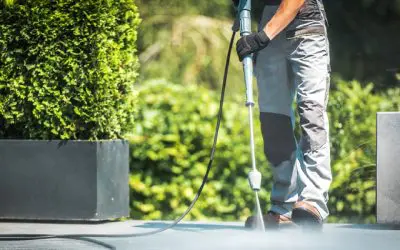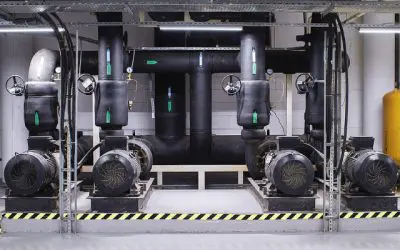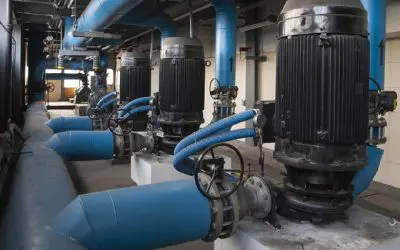
Handling and transferring corrosive or hazardous chemicals is a fundamental part of many industrial processes. However, the aggressive nature of these fluids poses significant challenges to the pumps tasked with moving them safely and efficiently. Unlike a typical water transfer pump in Singapore, which generally handles neutral fluids, pumps for corrosive substances must withstand extreme conditions without compromising performance, safety, or longevity.
The more corrosive a fluid is, the more severe its impact on a pump’s internal components. Over time, incompatible materials can degrade rapidly, leading to pump leakage, contamination, mechanical failure, and safety hazards for both workers and the environment. The stakes are high: poor material selection not only increases maintenance frequency and operational costs but can also cause costly downtime or even catastrophic system failures.
Choosing the right pump material is therefore a safety and business-critical decision, not just a technical one. Understanding the relationship between the fluid’s chemistry, the pump’s materials, and the operating conditions is the first step in ensuring reliability and compliance.
Understanding Chemical and Material Compatibility
At its core, material compatibility refers to how well a substance can resist corrosion, rust, or degradation when in contact with a chemical. The more compatible the material, the less likely it is to react, deteriorate, or weaken during operation. Every material, however robust, has its own “kryptonite”, a chemical or environmental factor that triggers its breakdown.
When a pump’s construction material is incompatible with the fluid it handles, a chemical attack occurs. The result ultimately depends on the specific interaction between the medium and the material. Over time, this leads to reduced performance, increased maintenance, and potential safety incidents.
Several corrosion mechanisms can occur depending on the chemical environment, temperature, and operating pressure:
- General corrosion – Uniform material loss across a metal’s surface, reducing wall thickness and eventually compromising its strength.
- Pitting corrosion – Localised corrosion that creates deep pits, which can lead to sudden and unexpected failures even if the rest of the surface appears intact.
- Stress corrosion cracking – Cracking that occurs at points of mechanical stress when exposed to certain corrosive agents, often resulting in catastrophic failure without warning.
- Galvanic corrosion – Occurs when dissimilar metals are electrically coupled in the presence of an electrolyte, accelerating the degradation of the less noble metal.
Each corrosion type demands specific countermeasures, from choosing suitable alloys and coatings to modifying operating conditions.
Consequences of Chemical Incompatibility
Chemical incompatibility manifests in several ways, each with distinct effects on pump performance and longevity:
- Light Attack: The material suffers mild etching or surface degradation. While initially minor, prolonged exposure can lead to pitting and eventual structural weakening.
- Swelling: Certain plastics or polymers absorb the chemical and expand in volume. For instance, a Noryl impeller exposed to diesel can swell until it rubs against the pump casing, obstructing movement and reducing efficiency.
- Dissolving: In severe cases, materials may dissolve entirely in the fluid they’re handling. A poor material match can cause rapid disintegration, much like sugar dissolving in hot water, rendering the pump inoperative.
- Brittleness: Some materials harden and lose flexibility over time. A gasket that becomes brittle can no longer expand or contract properly, leading to leaks. If an operator attempts to tighten the bolts further, the gasket can crack and fail altogether.
These examples highlight how even subtle incompatibility can compromise pump integrity, safety, and overall operational reliability.
Key Considerations When Working with Hazardous Media
When specifying a pump for corrosive or hazardous chemicals, understanding the chemical and physical characteristics of the fluid is essential. Key parameters include:
- Fluid Composition:
Some chemicals are inherently more corrosive than others. For instance, hydrochloric acid poses far greater risks than water, requiring far more resilient materials. - Presence of Solids:
Suspended solids or slurries can accelerate corrosion through abrasion or erosion, further stressing the pump materials. - Fluid Concentration:
The concentration of a chemical directly influences its aggressiveness. For instance, pure (100%) hydrochloric acid is less corrosive than a 36% solution, as the reaction rate increases in diluted forms. - Temperature:
Elevated temperatures generally increase the rate of chemical reactions and corrosion. Materials must therefore be chosen not just for chemical compatibility but also for thermal stability.
Beyond these chemical properties, operational and design factors also influence material selection:
- Pump Type:
Centrifugal and positive displacement pumps experience different stress conditions. As such, their material requirements can differ significantly. - Lifecycle Costs:
A material that’s initially more expensive might deliver lower total costs over time due to reduced maintenance and longer lifespan. - Compatibility with Connected Equipment:
The pump’s materials must align with those used in adjoining pipelines, valves, and fittings to prevent galvanic corrosion or cross-contamination. - Regulatory Compliance:
In industries like pharmaceuticals, food, or hazardous materials, compliance with stringent standards (e.g., FDA, ATEX, or ISO) often dictates what materials can be used.
These considerations also tie closely to energy efficiency. Selecting a high-efficiency pump that’s constructed from suitable materials ensures that chemical compatibility and performance go hand in hand, minimising energy waste while extending operational life.
Common Pump Materials for Chemical Transfer
1. Polytetrafluoroethylene (PTFE)
PTFE, commonly known as Teflon, is celebrated for its exceptional chemical inertness and stability. Thanks to its strong carbon-fluorine bonds, PTFE resists attack from nearly all industrial chemicals, making it ideal for aggressive environments. It remains stable across a wide temperature range, from cryogenic levels up to approximately 260°C, without losing its integrity.
In addition to its chemical resistance, PTFE’s non-stick surface minimises product buildup and simplifies cleaning. Its low friction also reduces mechanical wear, extending the lifespan of components such as diaphragms and seals.
Applications:
- Strong acids (e.g., hydrochloric, hydrofluoric, sulfuric, and nitric acids)
- Strong bases (e.g., sodium and potassium hydroxide)
- Ultra-pure chemicals, where contamination must be avoided
- Aggressive solvents like chlorinated hydrocarbons and aromatics
PTFE is often the go-to choice for industries demanding the highest levels of purity and corrosion resistance.
2. Polyvinylidene Fluoride (PVDF)
PVDF offers an excellent balance of chemical resistance and mechanical strength. It’s tougher and more abrasion-resistant than PTFE while retaining substantial chemical inertness. Its rigidity makes it suitable for components that experience structural stress or need to handle corrosive fluids containing solids.
PVDF performs well with halogens, strong acids (except fuming types), alcohols, and many industrial solvents. It also resists UV radiation and maintains stability across a broad temperature spectrum. These properties make PVDF ideal for pump housings, manifolds, and piping systems exposed to harsh conditions.
Applications:
- Chlorine and bromine transfer
- Acidic or solvent-based solutions
- Outdoor chemical processing systems requiring UV resistance
3. Stainless Steel
While plastics dominate in many corrosive chemical applications, some conditions demand the mechanical strength and heat resistance of metals. Stainless steel, particularly 316L and Duplex grades,remains a mainstay in industrial pumping systems.
316L Stainless Steel
This austenitic grade includes molybdenum, enhancing resistance against chlorides and sulfuric acid. It offers excellent toughness, ductility, and weldability, making it ideal for a wide range of process fluids and hygienic applications.
Duplex Stainless Steel (e.g., 2205)
Combining the strengths of austenitic and ferritic steels, Duplex grades provide exceptional resistance to pitting, crevice corrosion, and chloride stress cracking, common in seawater or saline environments. They’re also mechanically stronger, allowing for lighter, more compact designs.
Applications:
- Moderate acids and bases
- Solvents and hydrocarbons
- Pharmaceutical and biotech processes requiring sterility
- Food and beverage manufacturing
- Seawater and brine handling
In short, stainless steel remains the preferred option where temperature, pressure, and mechanical load exceed what polymers can tolerate.
Conclusion
Apart from durability, choosing the correct pump material for corrosive and hazardous fluids is a matter of operational safety and efficiency. Understanding chemical compatibility, corrosion mechanisms, and process variables ensures that pumps can operate reliably, safely, and cost-effectively. Through careful assessment, facilities can significantly reduce downtime, extend equipment lifespan, and ensure safe handling of even the most aggressive chemicals.



